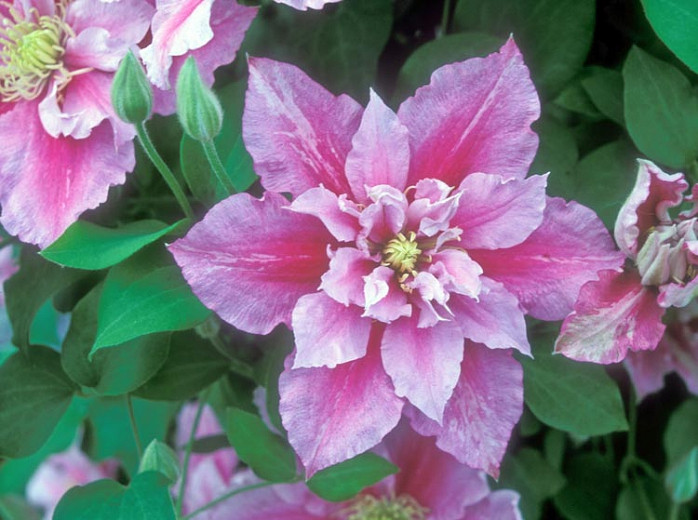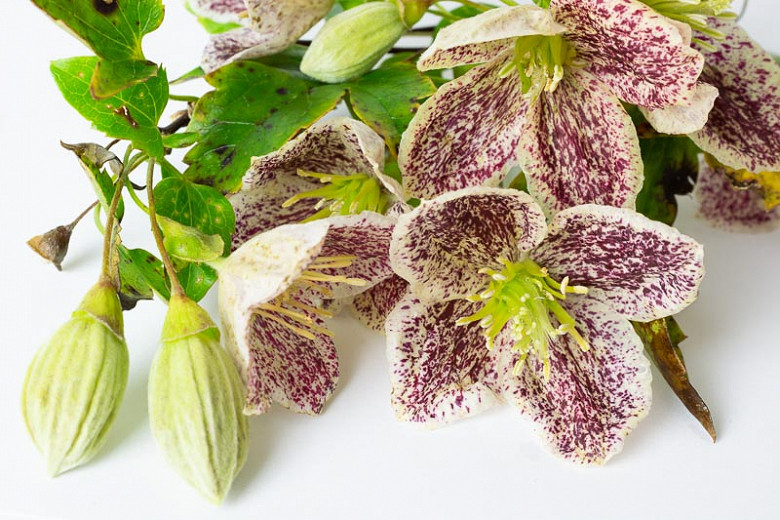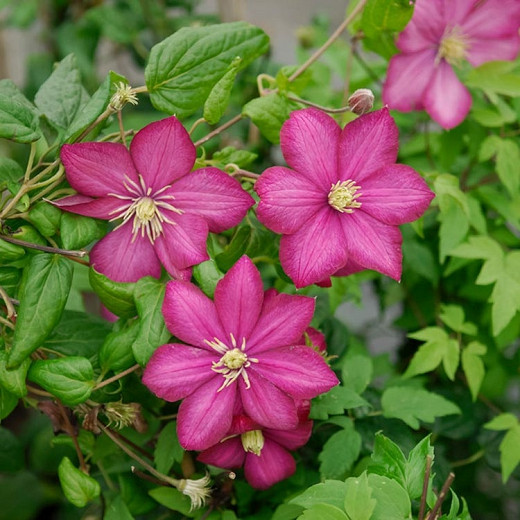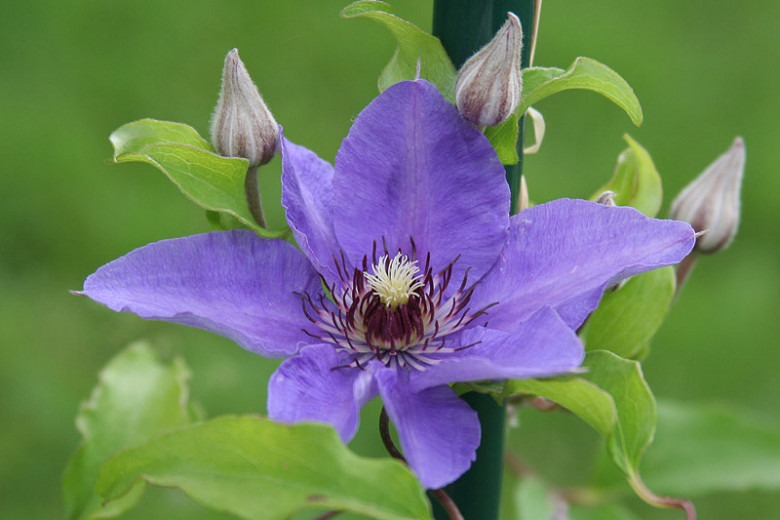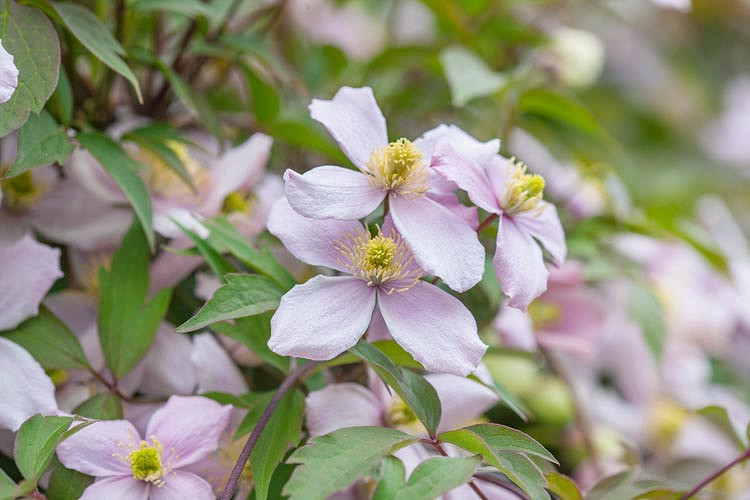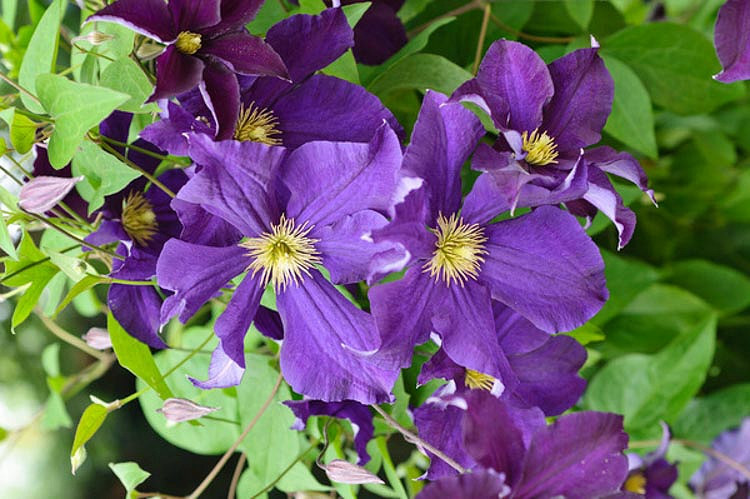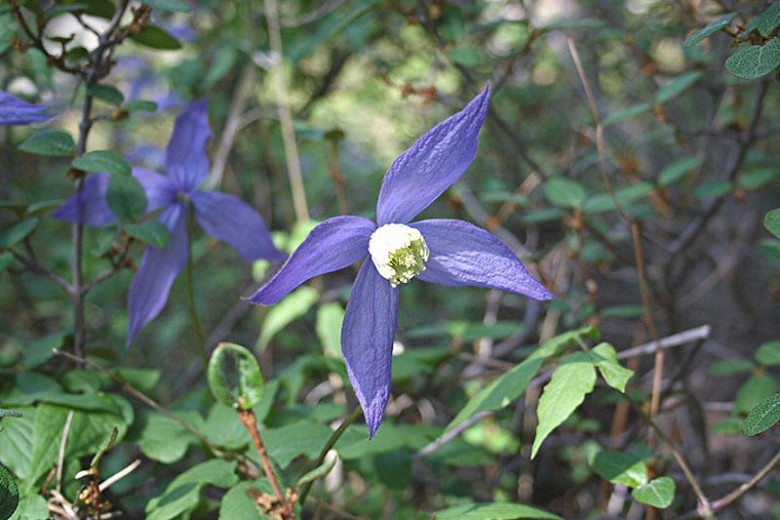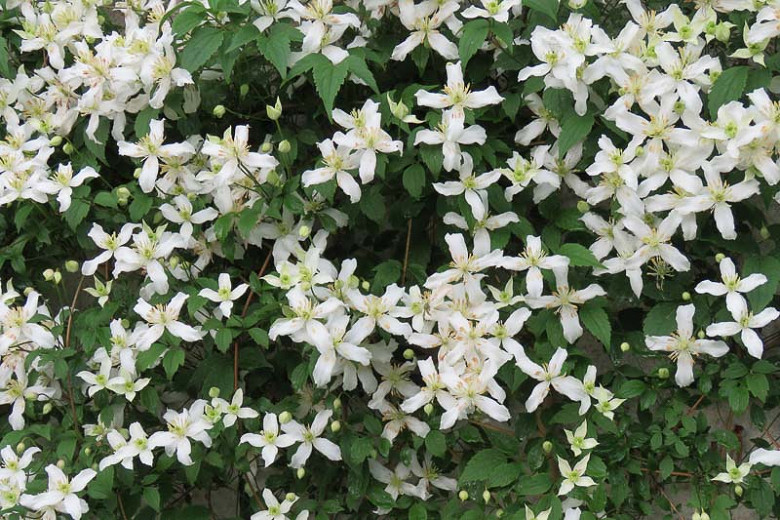Clematis Piilu (Early Large-Flowered Clematis)
Regarded by many as one of the best clematis for containers ever, 'Piilu' is a vigorous large-flowered clematis of great interest. The first flush of flowers in late spring are usually double or semi-double with the second in late summer being single. The flowers, 3-4 in. across (7-10 cm), are pale mauve-pink, each sepal with a broad rose bar paling towards their ruffled edges. They surround and pleasantly contrast with a central boss of creamy-white to pale yellow anthers. 'Piilu' is also noted for being one of the heaviest blooming Clematis. In cooler climates, this plant blooms non-stop from late spring through early fall. Freely produced, the flowers are so profuse that they literally obscure the foliage. Remaining dense and short, this prolific clematis is ideal for growing in containers, but equally happy when grown in the ground or gracefully meandering over a trellis. 'Piilu' means 'Little Duckling' in Estonian.
- Easy to grow and to cultivate, it thrives in moist, well-drained soils, in full sun. Tolerates part shade. Ideally, Clematis prefer having their 'heads in the sun and their feet in the shade'. Keep the roots cool and shaded by other plants or add a layer of pebbles or flat stones at the base. Afternoon shade is appreciated in hot summer areas.
- Hardy, this clematis can quickly grow up to 3-6 ft. long (90-180 cm).
- Deadhead after the first wave of blooms to promote new blooms.
- This Clematis belongs to the second group of Clematis – a group including Clematis which flower in early summer on short shoots developing from the last year's growth. Some flower again in late summer on new growth. These Clematis vines should be pruned in late winter or early spring before new growth starts and after the first flush of flowers in early summer.
- Prune in late winter or early spring: Remove dead or weak stems before growth begins. Check individual stems from the top down until you reach a pair of healthy buds, and prune just above them, removing the spindly or damaged growth above. Avoid heavy pruning or flowers will be lost
- Then prune again after the first flush of flowers: To encourage a second flush of flowers later in the season prune back some stems by cutting to large buds or a strong side shoot immediately below the blooms. Top-heavy or overgrown plants can be gradually reduced over two to three seasons by pruning back harder after the first flush of flowers. They are unlikely to produce a second flush of flowers but should flower again the following year, in late spring or early summer
- Alternatively, leave clematis in this group unpruned, and then hard prune them to 30-90cm (1–3ft) from the base every three or four years in late winter (as for pruning group three). In the first year after renovation, they will only flower once.
- Toxic to dogs, toxic to cats, toxic to horses.
Requirements
| Hardiness | 3 – 9 |
|---|---|
| Climate Zones | 2A, 2B, 3A, 3B, 4, 5, 6, 7, 8, 9, 10, 11, 14, 15, 16, 17, 18, 19, 20, 21, 22, 23, 24 |
| Plant Type | Climbers |
| Plant Family | Clematis |
| Exposure | Full Sun, Partial Sun |
| Season of Interest | Spring (Late)Summer (Early,Mid,Late)Fall |
| Height | 3' – 6' (90cm – 180cm) |
| Spread | 3' – 4' (90cm – 120cm) |
| Spacing | 36″ – 48″ (90cm – 120cm) |
| Water Needs | Average |
| Maintenance | Low |
| Soil Type | Chalk, Clay, Loam, Sand |
| Soil pH | Alkaline, Neutral |
| Soil Drainage | Moist but Well-Drained |
| Characteristics | Showy |
| Tolerance | Deer |
| Attracts | Butterflies, Hummingbirds |
| Garden Uses | Arbors, Pergolas, Trellises, Beds and Borders, Patio and Containers, Small Gardens |
| Garden Styles | City and Courtyard, Informal and Cottage, Traditional Garden |
